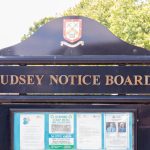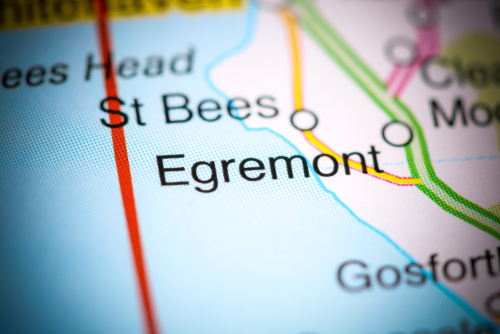
Egremont In Brief
The small West Cumbrian market town of Egremont is situated just outside the Lake District National Park in Northwest England. It lies about 5 miles (8 km) south of the port of Whitehaven on the River Ehen, situated at the foot of Uldale Valley and Dent Fell. The layout of the town’s wide ‘Main Street’ and central market is a legacy of its Medieval origins.
The name Egremont is thought to be derived from ‘Aigremont’, an ancient commune in the Yvelines department of Normandy. It roughly translates as ‘Mount of Sorrow’, reflecting the bloody clashes between the Vikings and Normans at Egremont.
The town has a long industrial heritage, especially that of iron ore mining, which dates back to the 12th century. However, today, the town is probably best known for its annual Crab Fair, which famously hosts the world ‘gurning’ championships.
Go to the Cumbria Business Directory
A Fleeting History
The Barony of Copeland
The Viking Danes were the first known settlers of the Egremont area. They arrived sometime towards the end of the 10th century and quickly established a fort in the area. In the late 11th century, the barony of Copeland was bestowed by William II to the Norman warlord, Ranulph de Meschines. However, when Ranulph was elevated to the Earl of Chester, his barony of Copeland was returned to the crown as part of the deal.
As fate would have it, some 20 years later, the barony was awarded to Ranulph’s brother, William de Meschines, by Henry I. William decided to make Egremont his place of residence and subsequently decided to build a castle. The work began around 1120 on a ‘motte and bailey’ timber structure on a site overlooking the River Ehen. Almost immediately, a town began to grow around the castle.
However, it was soon realised a more robust stronghold would be required to defend the area against the frequent incursions by Scots raiders. The stone castle replacement reputedly took some 150 years to complete.
Early Egremont
Iron ore mining is thought to have begun in and around Egremont as early as 1150. Within 50 years it had made Egremont a relatively prosperous area. Its wide main street and a large open market, laid down by local nobleman and then castle owner, Richard de Lucy, was a reflection of the local wealth. However, Richard died without an heir, which saw ownership of the castle pass to the De Multon family.
Thomas de Multon was granted the town’s first market charter in 1267, which included the right to hold an annual fair. The fair has survived and evolved into what is today’s popular Egremont Crab Fair. The ownership of the castle and estate eventually passed to Thomas de Lucy, grandson of Thomas Multon.
In 1322, a daring raid into northern England by Scots led by Robert Bruce saw Egremont come under attack. The town was caught off guard and a relatively large number of locals were killed. Scottish raids became a regular event over the following centuries which saw Egremont suffer a depletion of its population.
Meanwhile, Anthony de Lucy would be the last Baron Lucy, as he died in 1369, without a male heir. The estate passed to his brother-in-law Henry Percy, 1st Earl of Northumberland. By 1400, the castle was already being left empty for long periods and consequently fell into a state of neglect and disrepair. However, its ownership and that of the associated land, has stayed with the descendants of the Percy family to the present day.
A Town in Decline
The castle was for a little while used as a courthouse but eventually, it was totally abandoned. By the 16th century, the castle was in ruin, its stone being increasingly pilfered to construct other local buildings. However, the ruin of the castle still stands today just a few minutes walk from the town centre, as a monument to the early history of the town.
In 1565, access to the town was improved when a stone bridge across the River Ehen was built, which became known as “Old Bridge”. By the late 16th century, Egremont had a smaller population than it had had in the 14th century. This was mostly as a result of the negative influence of the frequent incursions by the Scots.
It was not until 1667 that any new construction in the area is recorded. A new stone building was constructed on Main Street, probably with stone robbed from the castle. In 1683, Old Bridge was replaced with a newer but similar structure. In 1748, another bridge, close to Briscoe Mill was constructed by John Pearson. Built at his own expense, the cost came to the grand total of £28-15s-0d.
(adsbygoogle = window.adsbygoogle || []).push({});
Boom Time for Egremont
In 1749, a “Turn Pike Trust” was established which greatly improved local roads. The town began to service the port of Whitehaven, which then was the third-largest in England. By the early 19th century, booming tanneries, corn mills, sailcloth mills, flint mills and flax mills, all stood along the banks of the River Ehen.
In 1822, the construction of a large masonry bridge close to Old Bridge, saw the latter demolished. By 1830, local iron ore mining had begun in earnest and within two decades the industry was booming. Around 1860, a railway line opened from Egremont to Whitehaven (see below). In 1879, the town got its first piped water supply and new mines at Wyndham and Gillfoot went into production. In 1880, a new school opened at Bookwell. And in 1881, the Parish Church was rebuilt. In 1885, the telephone was made available to the wealthy of the town.
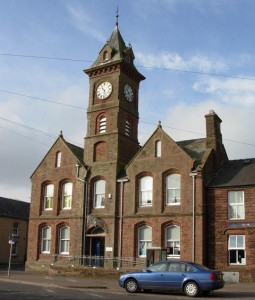
Photo © H Stamper (cc-by-sa/2.0)
In 1888, Main Street was paved and the town hall was built. By this time, the population had increased by well over 600% from that at the turn of the century. However, ironically, the iron ore industry had now entered its first major depression.
The War Years
During World War I, Egremont saw around 120 local servicemen lose their lives. During the war period, a new housing estate was built at Briscoe Mount and a new mine was opened by the Beckermet Mining Company. However, long periods of high unemployment in the area were to follow. During the apex of the Great Depression in the early 1930s, unemployed peaked at 90% in the Egremont area. The onset of World War II in 1939 saw the iron ore mines hit full production once again. However, a further 30 men from the Egremont area were to lay down their lives.
Egremont in the Modern Era
Egremont no longer has an industrial base of any note. The service and tourist industries have taken the place of jobs in the town’s heavy industry sector. However, the town’s largest employer is the nuclear site at nearby Sellafield. Though, the last few years has seen the running down of the local nuclear power industry, much of which is now undergoing the long decommissioning process.
At the 2011 national census, the population of Egremont was recorded as 8,194. Thus, this represents only a very moderate rise from that of the more than 6,000 at the end of the 19th century.
Egremont Crab Fair
One of the biggest events in the Egremont calendar is the annual Crab Fair. Dating back to 1267, it’s reckoned that the Fair is one of the oldest such events in the world. The day is not named after the local’s love of the tasty crustacean but due to the custom of dishing out free ‘crab’ apples during the festivities. The event is held on the third Saturday in September and boasts some unique events. None more so than the world ‘gurning’ championships.
Participants put their head through a horse collar and then proceed to pull the ugliest face they possibly can. The contest is judged by an ‘expert’ panel, while the cheering crowd looks on. A big part of the day celebrations is the crowning of the world champion ‘gurner’.
Another major event at the fair in past times was ‘climbing the greasy pole’. The prize for climbing the 30-ft (9 m) pole was originally a hat. However, from 1852 onwards it became a side of mutton. If there are no winners it was cut up and distributed to the poor. Unfortunately, due to Health & Safety legislation, the event was discontinued in 2004. However, a ‘Greasy Pole’ sculpture by Jeremy Deller to commemorate the long-held tradition was erected on Main Street in 2008.
One of the mainstay activity still held during the fair is traditional Cumberland & Westmorland wrestling. There is also the obligatory live music that tends to accompany all such events.
The Curse of Egremont Castle
Historically, there is a belief that the ownership of Egremont Castle carried a curse. This was because of atrocities carried out by some of its former owners. The notion started as early 1145, when then owner, William FitzDuncan, known as the Butcher of Craven, produced a son and male heir, with his wife Alice. However, the 12-year old boy was to meet a tragic and untimely death. Whilst staying with an aunt in Yorkshire, he fell into the River Wharfe and drowned. William died only 3 years later, while Alice went on to die childless. The incident helped to spawn a superstition that no male heir would ever live to inherit Egremont Castle.
Around 1200, the ownership of the castle had passed to Richard de Lucy, through the female line of the family. It was during his tenure of the castle that two further legends were born. About 1204, Richard was made ‘Forester of Cumberland’, whose emblem was a bugle horn. The tale tells of a bugle that was hung at the gates of Egremont castle, which could only be blown by the rightful owner.
The story elaborates further on the power struggle between two brothers to take up ownership of the castle. It’s alleged the second event happened in 1205, when Richard’s wife, Grunwilda, whilst partaking in a local hunting foray was devoured by a wolf. The tale is retold in the ancient poem “The Woeful Chase”. Richard de Lucy went on to die without an heir.
William Wordsworth went on to pen two works about Egremont Castle. He entitled them ‘The Boy of Egremont’ and ‘The Horn of Egremont Castle’, which were fanciful versions of the original tales.
Egremont had a Railway!
Circa 1860, the Whitehaven, Cleator and Egremont Railway was opened for the purpose of transporting iron ore to Whitehaven docks for export. Within a few years, the line was extended to Frizington, to connect with the Cockermouth to Workington line. From the mid-1860s onwards, the line operated a limited passenger service.
However, as the local mines began to close, so did the branches that served them. By the mid-1930s, all passenger services on the line had been withdrawn. From the mid-1950s, as mining operations in the area further declined so did the use of the line. British Steel ceased their operations at Rowrah quarry in 1978, and at Florence mine in 1980. This saw complete closure of the line soon afterwards.
Notable People
A few notable people that were born in Egremont are:
- William Benn (1600-1680) – was a renowned non-conformist church minister and author. One of his descendants was the renowned Labour politician Tony Benn.
- Martin Hodgson (1909-1991) – was a rugby league great of the 1930s who played for forward for Swinton and Great Britain.
- Francis Dunnery (1962) – is a songwriter and musician, who is arguably best known for being the former frontman of the Egremont 1980s rock group ‘It Bites’.
Did you know?
- In 1964, Wyndham School in Egremont was the first comprehensive school in the UK. This was a year ahead of the government’s formal introduction of the comprehensive education system to the country and a full 5 years before the system started up in Cumberland.
- Iron ore miners in the Egremont area were dubbed the ‘Red Men’, because of the fine red dust they were inevitable coated in after a day’s toil.
- Based on a legend of the town’s castle, ‘The Boy of Egremont’ is an 1834 works by JMW Turner.
- Egremont’s Florence Mine was the last deep iron ore mine in Europe before its closure in 1968.
Egremont in the National Spotlight
On 2 June 2010, Egremont was elevated to the national spotlight, when a gunman ran amok through West Cumbria. Derrick Bird, a 52-year-old local taxi driver, shot and killed twelve people in and around the Whitehaven area, two of which died in Egremont. Bird committed suicide before he could be arrested.
Sporting Egremont
The most popular sport in Egremont is almost certainly rugby, where both codes of the game are keenly played.
Egremont Rangers
Formed in 1900, Egremont Rangers are one the country’s oldest clubs and recognised as one of Cumbria’s top amateur teams. They play home games at Gillfoot Park, with a first-team that competes in the National Conference League Division 1.
Egremont Rugby Union FC
Egremont RUFC runs around 12 teams in total, with the first XV playing in the Northern Division – Cumbria 1. Home games are played at Bleach Green.
Others
Egremont Cricket Club play home games at Gillfoot Park. The Egremont & District Sunday Football League consists of nine teams for the local area.
Things to see and do in Egremont
Some of the things to see and do around the town, include:
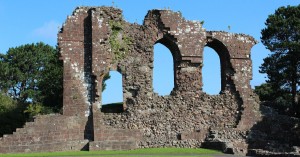
Image by Kate Wilson from Pixabay
- Egremont Castle – The ruins are set in neat and well-maintained gardens, just off the town’s Main Street. Well worth visit, especially in the summer months, when the flowers are in bloom.
- Florence Arts Centre – The centre is a multi-purpose art and performance venue based at the disused Florence Mine on the outskirts of Egremont. It houses an art gallery, cinema, theatre, a small café and workshop spaces and hosts live music events, stand-up comedy, and concerts.
- Florence Mine Heritage Centre – The Centre, which is also housed at the Florence Mine site, offers a mining museum, geology & mineral room, mock drift, shop, and a research facility.
- Lowes Court Gallery – The gallery shows a wide range of paintings, prints and craftwork. There are monthly exhibitions by both new and established artists. The gallery also houses the local Tourist Information Centre.
- St Michael & St Mary’s Church – The church dates from 1881 but uniquely built in a mock-Gothic style to replace an ancient church that existed on the same site since 1130. The design was carried by local architects T.L Banks of Whitehaven.
- St Bees Head Nature Reserve – The reserve, only 3 miles from Egremont, is one of the largest cliff seabird colonies on the west coast of England. Bird species that can be observed, include razorbills, kittiwakes, fulmars, puffins, gannets, cormorants, peregrines, skuas and the only black guillemots breeding in England.
- Cycling and Walking – Egremont is only 5 miles from the Lake District National Park, and 16 miles from the foot of Scafell Pike, England’s highest mountain. Thus, the town is a good base for those wanting to indulge in hiking and/or cycling.
Getting There!
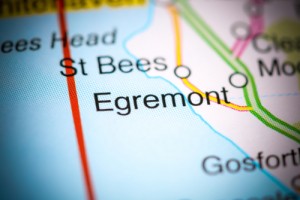
Header Image Credit: SevenMaps/Shutterstock.com
- The easiest way to get to Egremont from almost all parts of the country is to take the M6 motorway. From the M6, turn off at junction 40, near Penrith, onto the A66. Follow the A66 until its junction with A595 just north of Workington. Heading south along the A595, passing through Whitehaven, it’s about 14 miles to Egremont. An alternative route from the North is to take the A595 from Carlisle.
- If you’re travelling by train, the nearest railway station to Egremont is St Bees, which is about 2.5 miles away. St Bees is a stop on Cumbrian Coast Line, which runs between Carlisle in the North, and Barrow in the South. The service is operated by Northern Rail and trains run approximately every hour.
- Local bus services connecting Whitehaven to Workington, Cockermouth, Maryport and Carlisle, are operated by Stagecoach North West.
- The nearest international airports are Manchester and Newcastle. There’s a local domestic airport at Carlisle, about 40 miles away, but services are currently (2021) suspended.
Where to Stay?
There’s a fair amount of accommodation around the Egremont area. The town, along with Beckermet, Seascale, Cleator and St Bees, all less than 3 miles away, generally provide good quality accommodation at a reasonable price. The latter being especially true when taking into account the close proximity to ‘the Lakes’. Whitehaven is just 5 miles away and offers even more choice in terms of somewhere to stay. For 2 adults sharing, expect to pay £60 – £100 per night for inn/guesthouse, and £100 – £140 for a hotel-style room.
Thinking of Moving?
In the past year (Apr 2021), properties in Egremont have achieved an overall average price of approximately £113,500. The best selling properties were terraced house which sold for an average price of £92,000. Flats fetched for an average price of £65,000, semi-detached properties £108,500, while detached properties went for around £219,600. Over the last year, overall property prices in Egremont have enjoyed a 2% rise on the previous year.
So there you have it our Five Minute Overview of Egremont. Before you go why not try some of our quizzes or have a look at some of our other location guides. Better still why not join our growing community it’s free and could be very rewarding going forward.
Why Not Take The Egremont Quiz?
Quiz Maker – powered by Riddle

